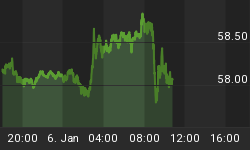The U.S. Dollar traded sharply lower on Wednesday against the European currencies and gave back most of its gains against the others following a weaker than expected U.S. ADP private jobs data report. Traders could be feeling that the poor employment number is a sign that the recovery is not as strong as previously forecast and that the Fed is still months away from an interest rate hike. Investors also priced in the possibility that the U.S. Non-Farm Payrolls Report on Friday will come in less than the currently estimated gain of 200,000 jobs.
The strong move in the EUR USD turned the main trend up on the daily chart following the trade through the last main top at 1.3437. This market still has to overtake the percentage retracement zone at 1.3542 to 1.3607 to trigger an acceleration to the upside.
The GBP USD finished higher because of the stronger Euro and on the thought that the weak ADP report means the U.S. is less likely to raise interest rates for "an extended period." Wednesday's rally was initiated by follow-through buying following Tuesday's better than expected U.K. 4Q GDP Report.
The stronger Euro helped to push the USD CHF sharply lower. Traders bought the Swiss Franc on the belief that the Swiss National Bank would be less likely to intervene to defend its currency and economy against a decline in the Euro. In addition, traders felt that the Fed had no reason to raise interest rates since the U.S. ADP jobs data indicated the economy was still in a weak state.
The USD JPY started out higher this morning, but broke following the weaker than expected U.S. ADP jobs report. The poor jobs report triggered a rally in the Japanese Yen as traders read this report as a sign that the U.S. economy was weaker than previously estimated. The USD JPY mounted a slight rally at the mid-session in response to the firming equity markets and was able to finish near its high on the close.
The weak U.S. economy helped to pressure the USD CAD. In addition, the strong Canadian GDP data suggested that the Bank of Canada is more likely to hike interest rates before the Fed. This widening interest rate differential helped to draw investors into the Canadian Dollar. Additional help was provided by higher crude oil and gold.
The Aussie and New Zealand Dollars took back some of their earlier losses on speculation that the Fed will keep interest rates lower for a prolonged period. Early in the session both currencies traded lower after Australia announced a worse than expected retail sales report. This market could weaken further on Thursday if global equity markets sell-off.
















